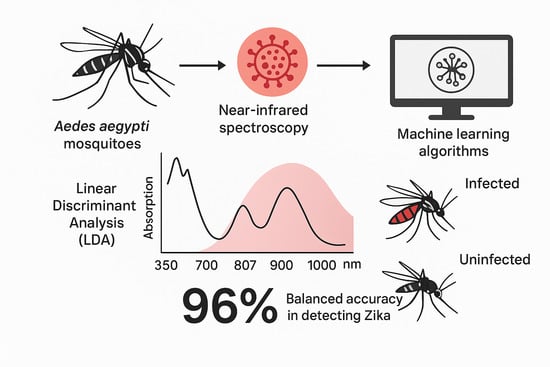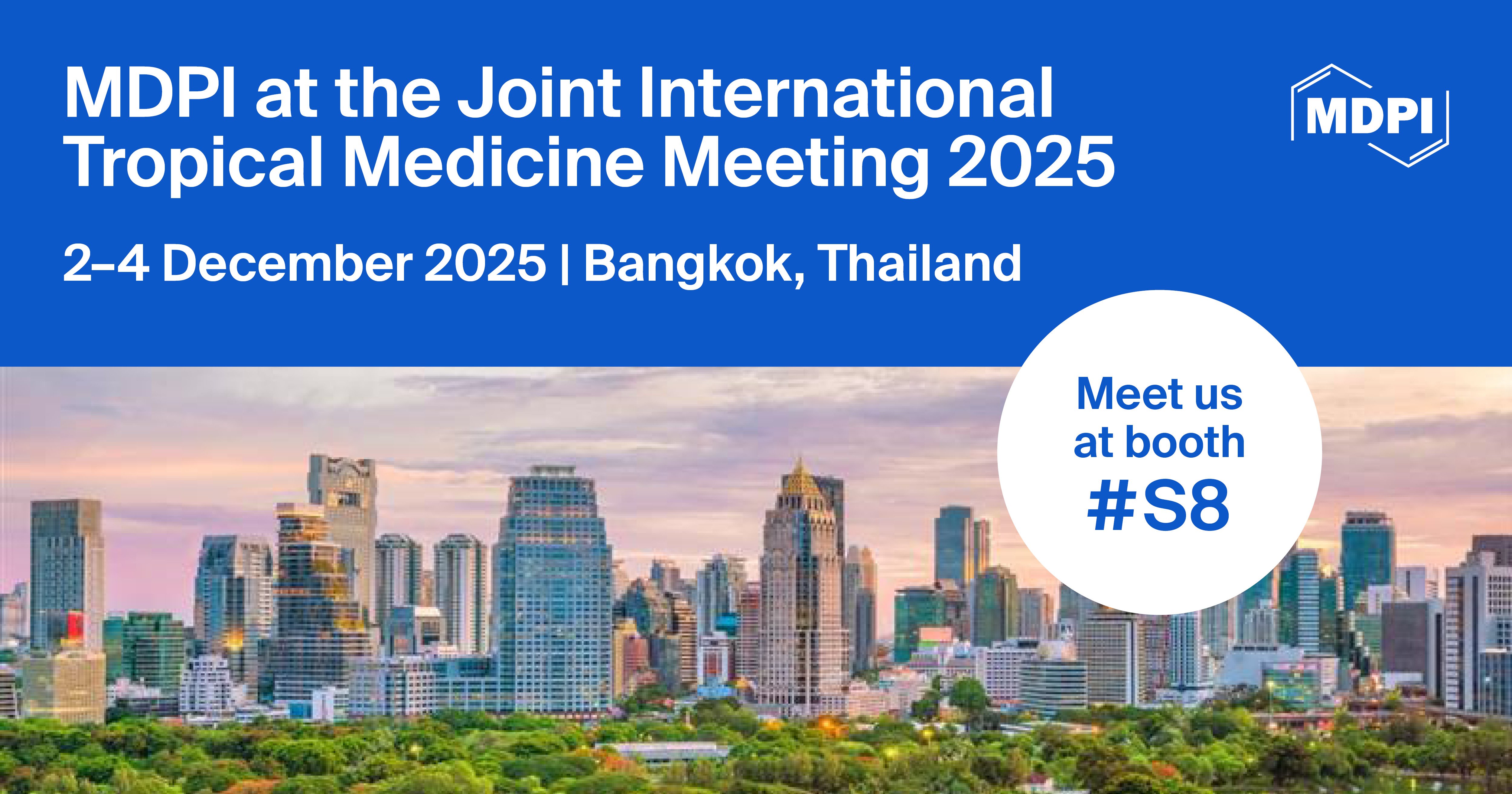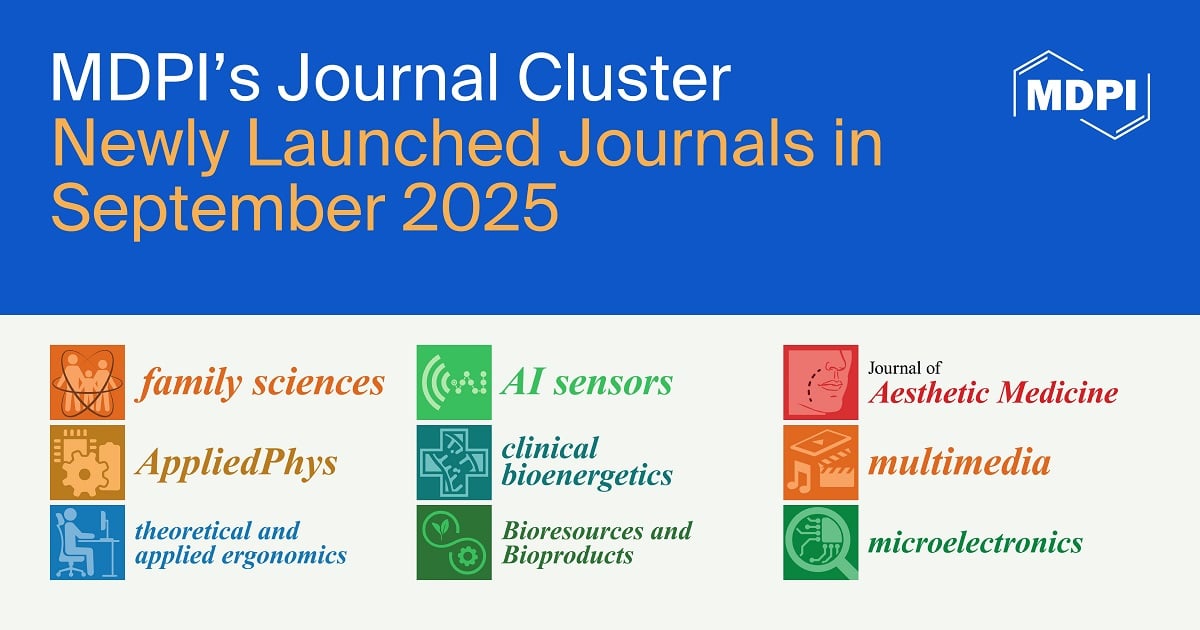Journal Description
Tropical Medicine and Infectious Disease
Tropical Medicine and Infectious Disease
(TropicalMed) is an international, scientific, peer-reviewed, open access journal of tropical medicine and infectious disease published monthly online by MDPI. The Australasian College of Tropical Medicine (ACTM) and its Joint Faculties of Travel Medicine and Expedition and Wilderness Medicine are affiliated with the journal, which serves as the official journal. Their members receive discounts on the article processing charges.
- Open Access— free for readers, with article processing charges (APC) paid by authors or their institutions.
- High Visibility: indexed within Scopus, SCIE (Web of Science), PubMed, PMC, Embase, Informit, and other databases.
- Journal Rank: JCR - Q1 (Tropical Medicine) / CiteScore - Q2 (Public Health, Environmental and Occupational Health)
- Rapid Publication: manuscripts are peer-reviewed and a first decision is provided to authors approximately 20.6 days after submission; acceptance to publication is undertaken in 3.1 days (median values for papers published in this journal in the first half of 2025).
- Recognition of Reviewers: reviewers who provide timely, thorough peer-review reports receive vouchers entitling them to a discount on the APC of their next publication in any MDPI journal, in appreciation of the work done.
Impact Factor:
2.6 (2024);
5-Year Impact Factor:
2.8 (2024)
Latest Articles
Limited Spectroscopy Data and Machine Learning for Detection of Zika Virus Infection in Aedes aegypti Mosquitoes
Trop. Med. Infect. Dis. 2025, 10(11), 308; https://doi.org/10.3390/tropicalmed10110308 - 29 Oct 2025
Abstract
This study presents a technique for categorizing Aedes aegypti mosquitoes infected with the Zika virus under laboratory conditions. Our approach involves the utilization of the near-infrared spectroscopy technique and machine learning algorithms. The model developed utilizes the absorption of light from 350 to
[...] Read more.
This study presents a technique for categorizing Aedes aegypti mosquitoes infected with the Zika virus under laboratory conditions. Our approach involves the utilization of the near-infrared spectroscopy technique and machine learning algorithms. The model developed utilizes the absorption of light from 350 to 1000 nm. It integrates Linear Discriminant Analysis (LDA) of the signal’s windowed version to exploit non-linearities, along with Support Vector Machine (SVM) for classification purposes. Our proposed methodology can identify the presence of the Zika virus in intact mosquitoes with a balanced accuracy of 96% (row C2HT, average of columns TPR (%) and SPC (%)) when heads/thoraces of mosquitoes are scanned at 4, 7, and 10 days post virus infection. The model was 97.1% (10 DPI, row C2AB, column ACC (%)) accurate for mosquitoes that were used to test it, i.e., mosquitoes scanned 10-days post-infection and mosquitoes whose abdomens were scanned. Notable benefits include its cost-effectiveness and the capability for real-time predictions. This work also demonstrates the role played by different spectral wavelengths in predicting an infection in mosquitoes.
Full article
(This article belongs to the Special Issue Beyond Borders—Tackling Neglected Tropical Viral Diseases)
►
Show Figures
Open AccessArticle
High-Resolution Geospatial Analysis of Dengue Vulnerability in Urban and Rural Areas of San Luis Potosí, Mexico
by
Darío Gaytán Hernández, Daniel Sánchez Hernández, Luis Eduardo Hernández Ibarra, Enrique Ibarra Zapata, Omar Parra Rodríguez, Verónica Gallegos García, Omar Medina de la Cruz and Marisol Gallegos García
Trop. Med. Infect. Dis. 2025, 10(11), 307; https://doi.org/10.3390/tropicalmed10110307 - 28 Oct 2025
Abstract
Objective: The aim was to analyze the temporal evolution and spatial distribution of classic and hemorrhagic dengue in the Mexican state of San Luis Potosí at the basic geostatistical area (BGA) level and to develop multivariate models to estimate the population’s degree of
[...] Read more.
Objective: The aim was to analyze the temporal evolution and spatial distribution of classic and hemorrhagic dengue in the Mexican state of San Luis Potosí at the basic geostatistical area (BGA) level and to develop multivariate models to estimate the population’s degree of vulnerability. Methodology: Classic and hemorrhagic dengue cases for 2015–2020 were obtained from the Mexican Ministry of Health, georeferenced at the pixel level, and subsequently grouped by BGA. Environmental, proximity, and social variables were obtained from official sites: IMTA, SMN, USGS, and INEGI. Multivariate logistic regression models were developed using PASW Statistics v. 18 software to estimate the degree of vulnerability, and the receiver operating characteristic curve was used to validate them. Results: A total of 125, 128, 109, 624, 1580, and 1817 dengue cases were identified for 2015, 2016, 2017, 2018, 2019, and 2020, respectively. The major factors contributing to the vulnerability of classic dengue fever included population, temperature, and distance to agricultural areas. For hemorrhagic dengue, the contributing factors were temperature, population, and mean annual rainfall. Vulnerability prediction was determined by taking the area under the curve values, which were 0.957 for classic dengue fever and 0.930 for hemorrhagic dengue, both indicating a “very good ability” to predict. Conclusions: These results can be used to design and implement targeted strategies, particularly for modifiable factors, such as prevention measures directed towards populated areas and the improvement of sewage systems, in addition to non-modifiable factors, such as temperature and rainfall. This method can be replicated as an additional tool to address this public health issue.
Full article
(This article belongs to the Special Issue Spatial Epidemiology and Infectious Diseases in the Context of Changing Climate)
►▼
Show Figures
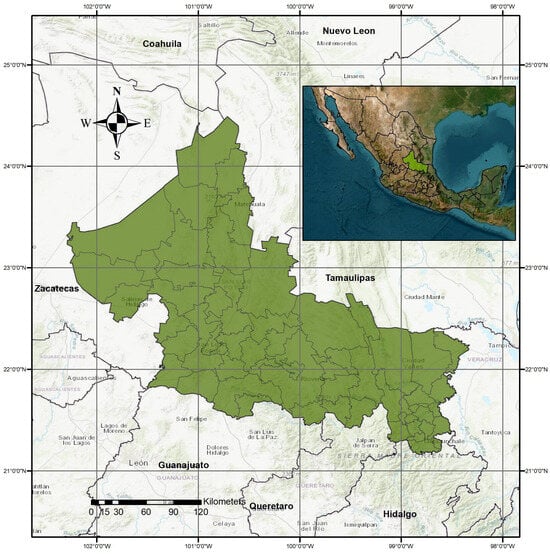
Figure 1
Open AccessArticle
Evaluation of Performance of C-Reactive Protein (CRP) and Interferon-Gamma-Inducible Protein 10 (IP-10) as Screening for Active Tuberculosis
by
Rotimi Samuel Owolabi, Russel Dacombe, Konstantina Kontogianni, Olusegun M. Akinwande, Lovett Lawson and Luis E. Cuevas
Trop. Med. Infect. Dis. 2025, 10(11), 306; https://doi.org/10.3390/tropicalmed10110306 - 27 Oct 2025
Abstract
Background: Most of the currently approved TB diagnostics are sputum-based. However, due to unusual clinical presentations of TB among HIV patients, they may not have TB symptoms and be able to produce sputum. Hence, these diagnostics may not be able to detect as
[...] Read more.
Background: Most of the currently approved TB diagnostics are sputum-based. However, due to unusual clinical presentations of TB among HIV patients, they may not have TB symptoms and be able to produce sputum. Hence, these diagnostics may not be able to detect as many TB cases as possible among these patients. Therefore, this study assessed the performance of C-reactive protein (CRP) and interferon-gamma-inducible protein 10 (IP-10) as a screening tool for TB. Methods: This prospective study was conducted by consecutively recruiting patients with TB symptoms, collecting their sputum and blood samples, using sputum culture as the reference standard, and determining the best cut-off point of serum levels of CRP and IP-10 (separately and in combination) for TB diagnosis. Findings: CRP and IP-10 were measured in 408 patients with TB symptoms, of which 21% had culture-confirmed TB. CRP’s sensitivity and specificity were (91.4% and 33.2%), (95.3% and 42.6%) and (84.8% and 22.1%) for the whole study population, HIV-negative and HIV-positive patients, respectively. The sensitivity and specificity of IP-10 were (87.3% and 40.9%), (87.5% and 50.3%) and (79.4% and 47.2%) for the patients’ categories, respectively. Combination of CRP and IP-10 slightly improved the performance of the biomarkers among HIV-negative patients, with sensitivity of 97.5% and specificity of 43.3%. Interpretation: Though CRP and IP-10 performed better in HIV-negative patients than among people living with HIV (PLHIV), the performance of the biomarkers is lower than what is recommended by the WHO (sensitivity ≥ 90% and specificity ≥ 70%) for a TB screening tool. Hence, there is a need for better non-sputum-based TB diagnostics.
Full article
(This article belongs to the Special Issue Innovative Approaches to Combat Infectious Diseases in Low and Middle Income Countries (LMICs): Epidemiology, Diagnosis, and Interventions)
►▼
Show Figures
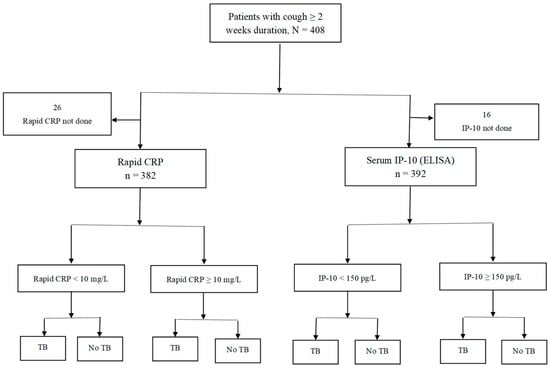
Figure 1
Open AccessArticle
Retrospective Analysis and Cross-Validated Forecasting of West Nile Virus Transmission in Italy: Insights from Climate and Surveillance Data
by
Francesco Branda, Mohamed Mustaf Ahmed, Dong Keon Yon, Giancarlo Ceccarelli, Massimo Ciccozzi and Fabio Scarpa
Trop. Med. Infect. Dis. 2025, 10(11), 305; https://doi.org/10.3390/tropicalmed10110305 - 27 Oct 2025
Abstract
Background. West Nile Virus (WNV) represents a significant public health concern in Europe, with Italy—particularly its northern regions—experiencing recurrent outbreaks. Climate variables and vector dynamics are known to significantly influence transmission patterns, highlighting the need for reliable predictive models to enable timely outbreak
[...] Read more.
Background. West Nile Virus (WNV) represents a significant public health concern in Europe, with Italy—particularly its northern regions—experiencing recurrent outbreaks. Climate variables and vector dynamics are known to significantly influence transmission patterns, highlighting the need for reliable predictive models to enable timely outbreak detection and response. Methods. We integrated epidemiological data on human WNV infections in Italy (2012–2024) with high-resolution climate variables (temperature, humidity, and precipitation). Using advanced feature engineering and a gradient boosting framework (XGBoost), we developed a predictive model optimized through time-series cross-validation. Results. The model achieved high predictive accuracy at the national level (R2 = 0.994, MAPE = 5.16%) and maintained robust performance across the five most affected provinces, with R2 values ranging from 0.896 to 0.996. SHAP analysis identified minimum temperature as the most influential climate predictor, while maximum temperature and rainfall demonstrated considerably weaker associations with case incidence. Conclusions. This machine learning approach provides a reliable framework for forecasting WNV outbreaks and supports evidence-based public health responses. The integration of climate and epidemiological data enhances surveillance capabilities and enables informed decision-making at regional and local levels.
Full article
(This article belongs to the Special Issue Global Perspectives on the Role of Invasive Mosquito Species and Emerging Vector-Borne Diseases)
►▼
Show Figures

Figure 1
Open AccessArticle
Web-Based Dashboard for Tracking Cryptococcosis-Related Deaths in Brazil (2000–2022)
by
Eric Renato Lima Figueiredo, Lucca Nielsen, João Simão de Melo-Neto, Claudia do Socorro Carvalho Miranda, Nelson Veiga Gonçalves, Rita Catarina Medeiros Sousa and Anderson Raiol Rodrigues
Trop. Med. Infect. Dis. 2025, 10(11), 304; https://doi.org/10.3390/tropicalmed10110304 - 27 Oct 2025
Abstract
Background: Cryptococcosis, a systemic mycosis, remains a neglected disease in Brazil due to the absence of systematic national surveillance. This study developed an interactive dashboard to analyze cryptococcosis-related deaths (2000–2022) and forecast trends through regional ARIMA modeling. Methodology: The Cross-Industry Standard Process for
[...] Read more.
Background: Cryptococcosis, a systemic mycosis, remains a neglected disease in Brazil due to the absence of systematic national surveillance. This study developed an interactive dashboard to analyze cryptococcosis-related deaths (2000–2022) and forecast trends through regional ARIMA modeling. Methodology: The Cross-Industry Standard Process for Data Mining framework was employed to extract mortality data from the Brazilian Mortality Information System, utilizing the microdatasus package in R Studio software, with R version 3.4.0. The records were then filtered using the International Classification of Diseases, Tenth Revision codes (B45 series) to identify primary and associated causes of death. After data extraction, a series of data preprocessing steps was implemented, including deduplication, variable recoding, and the management of missing values. The Shiny framework was employed to construct an interactive dashboard, incorporating Plotly and DT packages, with time-series visualizations, demographic variables, and multilingual support (Portuguese/English). Results: Among 12,308 deaths (2227 primary; 10,081 associated causes), most occurred in males aged 21–60 years. Data completeness was high for age/residence (100%) but lower for education (82%). The dashboard enables dynamic exploration of trends, demographic patterns, and open-data downloads. Regional ARIMA models revealed heterogeneous forecasts, with the Southeast projecting a decline (193 deaths in 2025; 95% CI: 146–240) and the South showing stability (141 deaths; 95% CI: 109–173). Conclusions: This tool bridges a critical gap in cryptococcosis surveillance, enabling dynamic mortality trend analysis, identification of high-risk demographics, and regional forecasting to guide public health resource allocation. While the absence of HIV serostatus data limits etiological analysis, the dashboard’s open-source framework supports adaptation for other neglected diseases.
Full article
(This article belongs to the Special Issue Tracking Infectious Diseases, 2nd Edition)
►▼
Show Figures

Figure 1
Open AccessArticle
Tuberculosis Preventive Treatment in People Living with HIV in Uganda: Facilitators and Barriers for Initiation and Completion
by
Ritah Mande, Pruthu Thekkur, Denis Mudoola, Joseph Nsonga, John Paul Dongo, Simon Muchuro, Stavia Turyahabwe, Henry Luzze, Proscovia Namuwenge, Selma Dar Berger, Deus Lukoye, Macarthur Charles, Odile Ferroussier-Davis and Riitta A. Dlodlo
Trop. Med. Infect. Dis. 2025, 10(11), 303; https://doi.org/10.3390/tropicalmed10110303 - 27 Oct 2025
Abstract
Tuberculosis preventive treatment (TPT) is a mainstay for reducing the tuberculosis (TB) burden among people living with human immunodeficiency virus (PLHIV). Context-specific challenges hinder TPT uptake and completion among PLHIV. During 2022–2024, a mixed-methods design was used to evaluate the TPT cascade and
[...] Read more.
Tuberculosis preventive treatment (TPT) is a mainstay for reducing the tuberculosis (TB) burden among people living with human immunodeficiency virus (PLHIV). Context-specific challenges hinder TPT uptake and completion among PLHIV. During 2022–2024, a mixed-methods design was used to evaluate the TPT cascade and explore its facilitators and barriers among PLHIV availing care from 12 PEPFAR-supported health facilities in Uganda. The quantitative component included analysis of routine programmatic data, and the qualitative component included focus group discussions and in-depth interviews with healthcare workers and PLHIV. A total of 1349 PLHIV were enrolled in the evaluation. Among PLHIV newly initiated on ART (≤3 months), 74% started TPT, and 98% of them completed it. In PLHIV already on ART, 87% had initiated TPT (76% before and 11% during this evaluation), with a treatment completion rate of 98%. The facilitators for TPT implementation included access to shorter TPT regimens, integration of services, and adherence counseling. Barriers included knowledge gaps, pill burden, TPT drug stock-outs, and documentation inconsistencies. The TPT completion rate was higher than the national target (90%), but the TPT initiation remains low. Improved access to shorter regimens, adherence counseling, better documentation, and service integration can sustain the completion rate and improve the initiation rate in Uganda and possibly elsewhere.
Full article
(This article belongs to the Special Issue New Perspectives in Tuberculosis Prevention and Control)
►▼
Show Figures
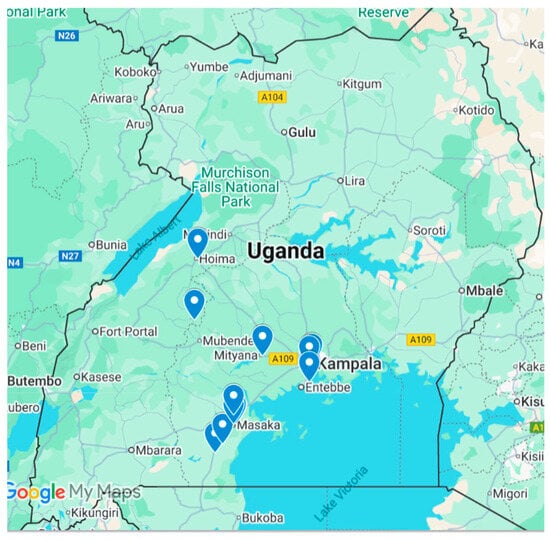
Figure 1
Open AccessArticle
Seroprevalence and Associated Risk Factors of Human Brucellosis in a Farming and Animal Health Community in South Africa, 2015–2016
by
Jennifer Rossouw, Anastasia N. Trataris-Rebisz, Stefano Tempia, Melinda K. Rostal, William B. Karesh and Veerle Msimang
Trop. Med. Infect. Dis. 2025, 10(11), 302; https://doi.org/10.3390/tropicalmed10110302 - 23 Oct 2025
Abstract
Brucellosis is a widespread zoonotic disease and a major contributor to febrile illness, often underdiagnosed. This study investigated the seroprevalence of brucellosis and the associated exposure factors within South African farming and animal health communities. A cross-sectional survey was conducted across 40,000 km
[...] Read more.
Brucellosis is a widespread zoonotic disease and a major contributor to febrile illness, often underdiagnosed. This study investigated the seroprevalence of brucellosis and the associated exposure factors within South African farming and animal health communities. A cross-sectional survey was conducted across 40,000 km2 in the Free State and Northern Cape provinces from 2015 to 2016. Interviews and serum samples were collected from 847 volunteers on randomly selected farms and veterinary professionals listed in a regional register. Samples were tested using a commercial Brucella IgG ELISA. Risk factors were assessed using logistic regression, accounting for within-farm clustering. The seroprevalence was higher among veterinary professionals (11.6%; 16/138) than farm-based participants (7.0%; 50/711); p = 0.095. Multivariable analysis identified several exposure factors within the farm-based population: age over 40 years (aOR = 5.35; 95% CI: 1.68–17.02), White population group (aOR = 4.60; 95% CI: 1.64–12.91), contact with diseased animals (aOR = 2.01; 95% CI: 1.05–3.84), and working 4–8 h daily with ungulates (aOR = 2.90; 95% CI: 1.25–6.76). Among veterinary professionals, odds of exposure were higher with more than 5 years of work (OR = 1.82; 95% CI: 1.21–2.72) and extended ungulate contact (OR = 4.85; 95% CI: 1.27–18.52). Occupational exposure highlights the need for improved brucellosis prevention strategies.
Full article
(This article belongs to the Special Issue Neglected Zoonotic Diseases in Sub-Saharan Africa)
►▼
Show Figures

Figure 1
Open AccessArticle
Improved Antibiotic Prescribing for Acute Conjunctivitis After Operational Research: A Before-and-After Study in a Ghanaian Eye Hospital
by
Henry Kissinger Ansong, Divya Nair, Joana Abokoma Koomson, Obed Kwabena Offe Amponsah, Jane Frances Acquah, James Buckman, Andrew Ramsay and Paa Kwesi Fynn Hope
Trop. Med. Infect. Dis. 2025, 10(11), 301; https://doi.org/10.3390/tropicalmed10110301 - 22 Oct 2025
Abstract
Empirical antibiotic treatment is common in acute conjunctivitis despite most cases being non-infectious or viral infections. Operational research (OR) at an eye hospital in Ghana (January–December 2021) identified appropriate antibiotic prescription in 71% of cases. Research dissemination and the sensitisation of key stakeholders
[...] Read more.
Empirical antibiotic treatment is common in acute conjunctivitis despite most cases being non-infectious or viral infections. Operational research (OR) at an eye hospital in Ghana (January–December 2021) identified appropriate antibiotic prescription in 71% of cases. Research dissemination and the sensitisation of key stakeholders followed, including communication of findings and implications to hospital prescribers. We conducted this OR covering January–December 2024 to test the hypothesis that the appropriateness of antibiotic prescriptions will improve, and to investigate the types of antibiotics prescribed and their AWaRe classification. There were 220 acute conjunctivitis cases in 2024, comparable to 2021 (201 cases). Antibiotics were prescribed in 67% of cases in 2024 and 55% in 2021 (aOR 2.51, 95% CI: 1.51–4.19, p < 0.001). Antibiotic prescription appropriateness was higher in 2024 than in 2021: 87% and 71%, respectively (95% CI for change: 5.99–25.99%, p = 0.001). In 2021, only ACCESS and WATCH antibiotics were prescribed. However, 15% of prescriptions in 2024 were RESERVE antibiotics, and multiple antibiotic prescriptions increased from 10% to 22%. This research demonstrates that regular operational research and interventions have the potential to improve antibiotic prescribing in ophthalmic practice in Ghana. It is imperative that the recommendations made by the initial researchers are fully implemented to protect the efficacy of available antibiotics.
Full article
(This article belongs to the Special Issue Field Impact of the SORT IT Initiative on Combating Antimicrobial Resistance Through a One Health Approach in Ghana)
►▼
Show Figures
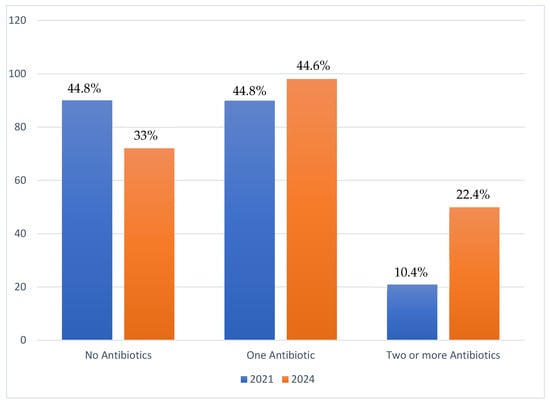
Figure 1
Open AccessArticle
Retrospective Cohort Study Comparing Outcomes and High-Risk Factors of Patients Presenting with Necrotizing Soft Tissue Infections in Far North Queensland—20 Years of Experience
by
Sarah Whitehouse, Ju Yong Cheong and Heng-Chin Chiam
Trop. Med. Infect. Dis. 2025, 10(10), 300; https://doi.org/10.3390/tropicalmed10100300 - 21 Oct 2025
Abstract
Background: Necrotizing soft tissue infections (NSTIs) are high-morbidity and high-mortality conditions that particularly affect comorbid patients. Previous Australian cohorts had limited numbers of patients within them; however, due to geographical, social and climate factors, North Queensland has significantly higher presentations than most of
[...] Read more.
Background: Necrotizing soft tissue infections (NSTIs) are high-morbidity and high-mortality conditions that particularly affect comorbid patients. Previous Australian cohorts had limited numbers of patients within them; however, due to geographical, social and climate factors, North Queensland has significantly higher presentations than most of the country. Methods: We have completed a retrospective cohort study between 2002 and 2012 and 2014 and 2024 of patients with ICD codes and documented clinical histories consistent with NSTI who presented to a single tertiary centre. Results: 213 patients were identified. There was a 14% mortality rate, and common comorbidities were diabetes, smoking, high BMI and high ethanol use. Patients were likely to present with vital signs within the normal range and high inflammatory markers. Of the patients, 51% identified as First Nations, an incidence rate 88 times higher than all other ethnicities put together. First Nations patients were younger (51.78 vs. 55.74 years, p = 0.02), had higher rates of diabetes (86% vs. 34%, p ≤ 0.001), shorter times spent in ICU (6.77 days vs. 10.1 days, p = 0.03), higher average time to theatre (57.7 h vs. 35.3 h, p = 0.03) but a comparable mortality rate (13.9% vs. 13.3%, p ≥ 0.99) Conclusions: This study helps us to better understand NSTI in the Australian setting as a basis for further research.
Full article
(This article belongs to the Section Infectious Diseases)
►▼
Show Figures
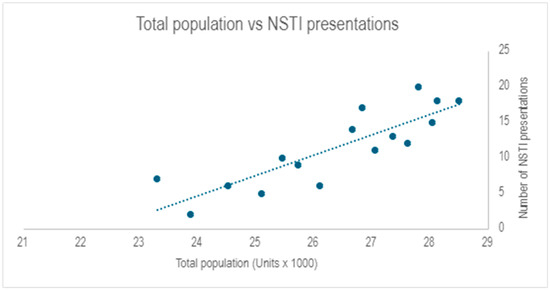
Figure 1
Open AccessArticle
Mosquito Feeding Preference, Infectivity Rates, and Knockdown Resistance Within the Wild Population of Anopheles arabiensis in Jabi Tehnan District, Northwest Ethiopia
by
Alemnesh Hailemariam Bedasso, Sisay Dugassa, Jimma Dinsa Deressa, Geremew Tasew Guma, Getachew Tolera Eticha, Mesay Hailu Dangisso, Eliningaya J. Kweka and Habte Tekie
Trop. Med. Infect. Dis. 2025, 10(10), 299; https://doi.org/10.3390/tropicalmed10100299 - 21 Oct 2025
Abstract
Background: In recent decades, malaria vector species distribution and insecticide resistance have taken new colonization steps across Africa. Understanding the malaria vector insecticide resistance status, blood meal source, and species composition is of paramount importance in designing evidence-based vector control strategies. This study
[...] Read more.
Background: In recent decades, malaria vector species distribution and insecticide resistance have taken new colonization steps across Africa. Understanding the malaria vector insecticide resistance status, blood meal source, and species composition is of paramount importance in designing evidence-based vector control strategies. This study assessed the blood meal sources, sporozoite (infectivity) rate, and knockdown resistance allele’s frequency in female Anopheles arabiensis in chosen villages of Jabi Tehnan District, Northwest Ethiopia. Methods: The host-seeking and resting Anopheles gambiae s.l. were collected using human landing catches (HLCs), CDC light traps (CDC-LTs), pyrethrum spray catches (PSCs), and pit shelters (PSs) both indoors and outdoors. The analysis of both blood meal sources and circumsporozoite proteins was performed using enzyme-linked immunosorbent assay (ELISA). The detection of knockdown resistance gene mutations and species identification were conducted using a polymerase chain reaction (PCR). Results: A total of 5098 female Anopheles gambiae s.l. were collected. Of these, 1690 (33.2%) were collected from HLCs, 1423 (27.9%) from CDC light traps, 1635 (32.0%) from PSCs, and only 350 (6.9%) from pit shelters (PSs). Of these, 57.2% (n = 2915) female Anopheles mosquitoes were collected indoors using CDC light traps (CDC-LTs), human landing catches (HLCs), and pyrethrum spray catches (PSCs), while 38.2% (n = 2183) were collected outdoors using human landing collection (HLC), CDC light traps (CDC-LTs), and artificial pit shelters (PSs). Molecular identification to the species level showed that among the 530 An. gambiae s.l. samples analyzed using PCR, 96.03% (509) were An. arabiensis, and 3.97% (21) were unidentified species. The biting peak was found to be from 22:00 to 00:00 h for An. arabiensis. However, their activity decreased sharply after 23:00 to 00:00 h. The distribution of knockdown resistance genes in the tested specimens of An. arabiensis consisted of 1.4% (n = 3) heterozygous resistant (RS), 17.9% (n = 38) homozygous resistant (RR), and 80.7% (n = 171) homozygous susceptible (SS) genotypes. A higher proportion of Anopheles mosquitoes analyzed for blood meal analysis had a human blood meal origin at 13.1% (n = 47), followed by bovine at 8.9% (n = 32) and mixed at 5.8% (n = 21). Conclusions: The dominant malaria vector species was Anopheles arabiensis in the study area with a higher human blood meal origin. The Kdr gene was confirmed in the tested An. arabiensis, indicating that an alternative insecticide class should be used in the study area.
Full article
(This article belongs to the Special Issue Insecticide Resistance and Vector Control)
►▼
Show Figures

Figure 1
Open AccessCorrection
Correction: Kovner et al. Jagged-1/Notch Pathway and Key Transient Markers Involved in Biliary Fibrosis during Opisthorchis felineus Infection. Trop. Med. Infect. Dis. 2022, 7, 364
by
Anna Kovner, Oxana Zaparina, Yaroslav Kapushchak, Galina Minkova, Viatcheslav Mordvinov and Maria Pakharukova
Trop. Med. Infect. Dis. 2025, 10(10), 298; https://doi.org/10.3390/tropicalmed10100298 - 20 Oct 2025
Abstract
In the original publication [...]
Full article
(This article belongs to the Special Issue Trematode Infections in the Asian Perspective)
►▼
Show Figures
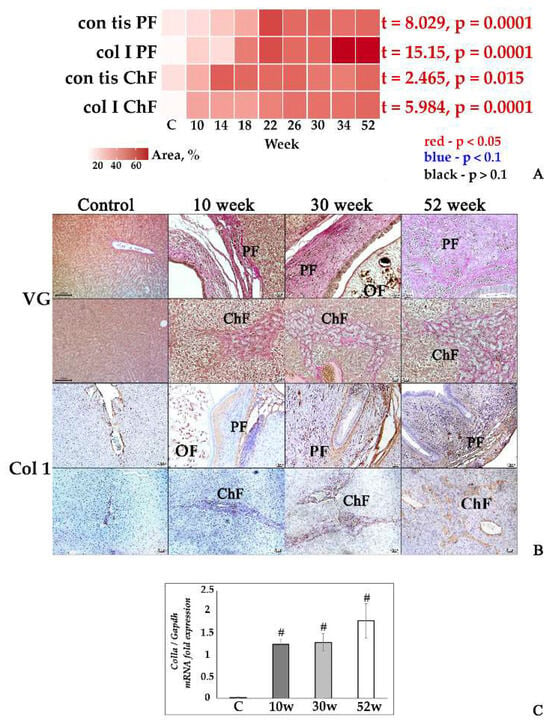
Figure 1
Open AccessReview
Impact of El Nino Southern Oscillation and Climate Change on Infectious Diseases with Ophthalmic Manifestations
by
Crystal Huang, Caleb M. Yeh, Claire Ufongene, Tolulope Fashina, R. V. Paul Chan, Jessica G. Shantha, Steven Yeh and Jean-Claude Mwanza
Trop. Med. Infect. Dis. 2025, 10(10), 297; https://doi.org/10.3390/tropicalmed10100297 - 18 Oct 2025
Abstract
Climate change and the El Niño Southern Oscillation (ENSO) events have been increasingly linked to infectious disease outbreaks. While growing evidence has connected climate variability with systemic illnesses, the ocular implications remain underexplored. This study aimed to assess the relationships between ENSO-driven climate
[...] Read more.
Climate change and the El Niño Southern Oscillation (ENSO) events have been increasingly linked to infectious disease outbreaks. While growing evidence has connected climate variability with systemic illnesses, the ocular implications remain underexplored. This study aimed to assess the relationships between ENSO-driven climate events and infectious diseases with ophthalmic consequences. A narrative review of 255 articles was conducted, focusing on infectious diseases influenced by ENSO and their associated ocular findings. 39 articles met criteria for full review, covering diseases such as dengue, zika, chikungunya, malaria, leishmaniasis, leptospirosis, and Rift Valley fever. Warmer temperatures, increased rainfall, and humidity associated with ENSO events were found to enhance vector activity and disease transmission. Ocular complications included uveitis, retinopathy, and optic neuropathy, but the specific disease findings varied by infectious disease syndrome. The climactic variable changes in response to ENSO events differed across diseases and regions and were influenced by geography, local infrastructure, and socioeconomic factors. ENSO event-related climate shifts significantly impact the spread of infectious diseases with ocular symptoms. These findings highlight the need for region-specific surveillance and predictive models that may provide insight related to the risk of ophthalmic disease during ENSO events. Further research is needed to clarify long-term ENSO effects and develop integrated strategies for systemic and eye disease detection, prevention, and management.
Full article
(This article belongs to the Special Issue Infectious Diseases, Health and Climate Change)
►▼
Show Figures

Figure 1
Open AccessArticle
Evaluation of Tuberculosis Preventive Treatment Uptake Among People Living with HIV in PEPFAR-Supported Facilities in Zimbabwe
by
Collins Timire, Tawanda Mapuranga, Ronald T. Ncube, Talent Maphosa, Sithabiso Dube, Nqobile Mlilo, Cynthia Chiteve, Selma Dar Berger, Owen Mugurungi, Fungai Kavenga, Tsitsi Mutasa-Apollo, Manners Ncube, Clorata Gwanzura, Macarthur Charles, Riitta A. Dlodlo and Julia Ershova
Trop. Med. Infect. Dis. 2025, 10(10), 296; https://doi.org/10.3390/tropicalmed10100296 - 18 Oct 2025
Abstract
Tuberculosis preventive treatment (TPT) reduces the incidence of tuberculosis (TB) among people living with HIV (PLHIV), but its coverage remains suboptimal in most settings. We conducted a cross-sectional study to describe TPT uptake among PLHIV and factors influencing TPT initiation. Healthcare workers (HCWs)
[...] Read more.
Tuberculosis preventive treatment (TPT) reduces the incidence of tuberculosis (TB) among people living with HIV (PLHIV), but its coverage remains suboptimal in most settings. We conducted a cross-sectional study to describe TPT uptake among PLHIV and factors influencing TPT initiation. Healthcare workers (HCWs) in selected facilities were trained and supported to strengthen TPT management among PLHIV, including children living with HIV (CLHIV). Of 1309 enrolled PLHIV, 1268 (97%) were eligible for TPT; 1078 (85%) initiated TPT, including 663/776 (86%) among those currently on ART and 415/492 (84%) among clients newly on ART. The major reasons for not starting TPT included stock-outs of TPT medicines, TB disease, and refusal of TPT, mostly by CLHIV and adults currently on ART. Optimal and sustained uptake of TPT can be achieved through ensuring uninterrupted stocks of TPT medicines, including shorter regimens and pediatric formulations, addressing knowledge deficits among HCWs, and improving demand for TPT by educating PLHIV and caregivers of CLHIV about the benefits and risks of TPT formulations.
Full article
(This article belongs to the Special Issue New Perspectives in Tuberculosis Prevention and Control)
►▼
Show Figures
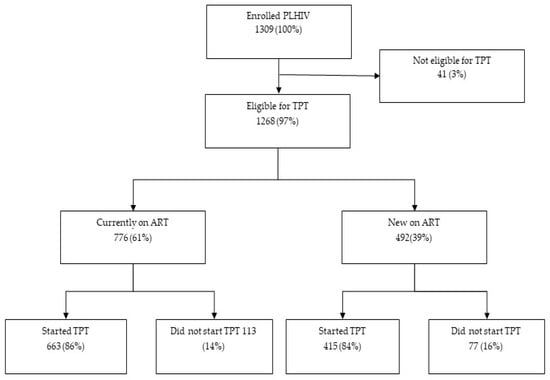
Figure 1
Open AccessSystematic Review
From Pediatric to Adult HIV Care: What Works to Keep Adolescents Engaged—A Systematic Review of Transition Strategies
by
Po-Pin Hung and Hsi-Hsien Wei
Trop. Med. Infect. Dis. 2025, 10(10), 295; https://doi.org/10.3390/tropicalmed10100295 - 16 Oct 2025
Abstract
Adolescents living with HIV face unique challenges when transitioning from pediatric to adult care—including stigma, disclosure concerns, and loss of support—that undermine continuity. We systematically searched PubMed, Embase, and Web of Science through August 2025 in accordance with PRISMA 2020. Two reviewers independently
[...] Read more.
Adolescents living with HIV face unique challenges when transitioning from pediatric to adult care—including stigma, disclosure concerns, and loss of support—that undermine continuity. We systematically searched PubMed, Embase, and Web of Science through August 2025 in accordance with PRISMA 2020. Two reviewers independently screened records and appraised risk of bias using Joanna Briggs Institute (JBI) tools by study design; appraisals informed interpretation but did not determine inclusion. Thirty-two studies met criteria; given heterogeneity, findings were narratively synthesized. Post-transition outcomes were suboptimal: retention often declined to ~70% by two years and viral suppression to roughly two-thirds, below global targets. Older transfer age and minimal gaps between pediatric discharge and adult enrollment were associated with better retention. Structured programs combining early preparation, coordinated handoffs, psychosocial/peer support, and youth-friendly adult services consistently improved engagement (often >90% 12-month retention), though improvements in viral suppression were less uniform. JBI appraisal indicated mostly moderate methodological quality with common risks from confounding and incomplete follow-up, tempering certainty. Purposeful, well-supported transition models are essential to sustain treatment success into adulthood; future work should evaluate scalable delivery and long-term outcomes across diverse settings.
Full article
(This article belongs to the Special Issue Adolescent HIV Care and Transition Strategies: Challenges, Outcomes, and Interventions)
►▼
Show Figures
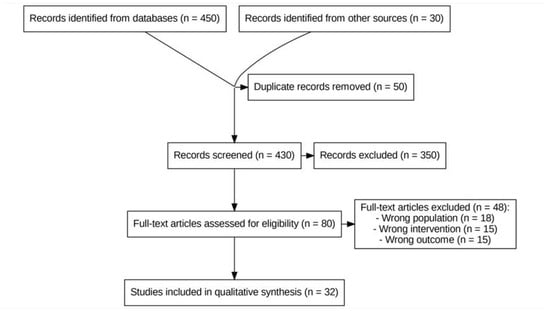
Figure 1
Open AccessArticle
Serology-Based Screening and Prevalence of Schistosomiasis, Strongyloidiasis, and Chagas Disease in Migrants Living with HIV: Results from a 10-Year Retrospective Cohort in an Italian Tertiary Healthcare Center
by
Anna Barbiero, Riccardo Paggi, Sasha Trevisan, Giuseppe Gasparro, Michele Spinicci, Costanza Malcontenti, Marco Pozzi, Paola Corsi, Gian Maria Rossolini, Maria Grazia Colao, Alessandro Bartoloni, Lorenzo Zammarchi and Filippo Lagi
Trop. Med. Infect. Dis. 2025, 10(10), 294; https://doi.org/10.3390/tropicalmed10100294 - 16 Oct 2025
Abstract
Background: Migration phenomena from low- to high-income countries have been constantly increasing in the past years, and migrants living with HIV (MLHIVs) currently represent a non-negligible proportion of the population living with HIV in the European setting. When taken into care, MLHIVs should
[...] Read more.
Background: Migration phenomena from low- to high-income countries have been constantly increasing in the past years, and migrants living with HIV (MLHIVs) currently represent a non-negligible proportion of the population living with HIV in the European setting. When taken into care, MLHIVs should be screened for tropical diseases capable of asymptomatically persisting for years and leading to severe and/or chronic complications, especially in immunocompromised populations. Methods: We conducted a retrospective study aimed at analyzing the screening ratios and seroprevalences of strongyloidiasis, schistosomiasis, and Chagas disease among MLHIVs who attended a tertiary care hospital outpatient clinic in Florence, Italy. Results: Between 2014 and 2023, 251 MLHIVs were enrolled, of which 85 (33.9%), 137 (54.6%), and 219 (87.3%) were at risk for schistosomiasis, Chagas disease, and strongyloidiasis, respectively. Among individuals at risk for each of these parasitic diseases, 43.4% were screened for strongyloidiasis, 25.9% for schistosomiasis, and 65.0% for Chagas disease, with a seroprevalence of 5.3%, 13.6%, and 0%, respectively. Conclusions: While confirming the relevant burden of neglected parasitic diseases in the MLHIV population, our results suggest the need to improve awareness of these diseases even in the specialist context in order to reduce underdiagnoses and the risk of severe complications, especially in particularly vulnerable groups of the population.
Full article
(This article belongs to the Special Issue Emerging and Re-emerging Infectious Diseases: Global and Local Burden, Surveillance, and Response Strategies)
►▼
Show Figures
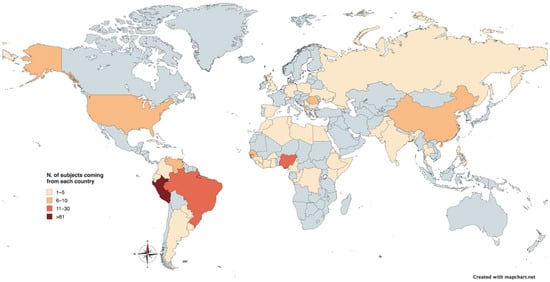
Figure 1
Open AccessArticle
Clinical Characteristics and Risk Factors of Tuberculosis in Children and Adolescents in Xinjiang, China: A Retrospective Analysis
by
Tao Xin, Gaofeng Sun, Jiangbutaer Entemake, Beiming Zhang, Weiwei Jiao and Qifeng Li
Trop. Med. Infect. Dis. 2025, 10(10), 293; https://doi.org/10.3390/tropicalmed10100293 - 16 Oct 2025
Abstract
Background: Tuberculosis (TB) remains a major public health challenge among children and adolescents in high-burden countries. Xinjiang, the region with the highest TB incidence in China, has limited data on the clinical and epidemiological characteristics of pediatric TB. Methods: We conducted a retrospective
[...] Read more.
Background: Tuberculosis (TB) remains a major public health challenge among children and adolescents in high-burden countries. Xinjiang, the region with the highest TB incidence in China, has limited data on the clinical and epidemiological characteristics of pediatric TB. Methods: We conducted a retrospective cross-sectional study of children and adolescents (≤17 years) hospitalized with TB at a regional referral hospital in Xinjiang between 1 January 2020 and 31 December 2022. Demographic, clinical, and laboratory data were analyzed, and risk factors for extrapulmonary TB (EPTB) and severe TB were assessed. Results: A total of 253 patients were included, of whom 54.9% (139/253) had pulmonary TB (PTB) and 45.1% (114/253) had EPTB. EPTB was more common among children <5 years (78.9%, 15/19). The predominant clinical symptoms were fever (55.7%, 141/253), cough (66.8%, 169/253), fatigue (60.9%, 154/253), and night sweats (51.8%, 131/253). Tuberculous meningitis (TBM) was the most frequent EPTB manifestation (40.4%, 46/114). Younger age, rural residence, and absence of BCG vaccination were associated with a higher risk of EPTB. Laboratory findings showed high positivity rates for tuberculin skin test (96.1%, 99/103) and interferon-γ release assay (84.5%, 196/232), but low yields for smear microscopy and Xpert MTB/RIF, especially in EPTB cases. Conclusions: Pediatric TB in Xinjiang is characterized by a high burden of EPTB, particularly TBM in young children. Strengthening early diagnosis and improving access to effective diagnostic tools are essential to reduce morbidity and improve outcomes in this vulnerable population.
Full article
(This article belongs to the Section Infectious Diseases)
►▼
Show Figures

Figure 1
Open AccessArticle
Molecular Characterization of Plasmodium Species to Strengthen Malaria Surveillance in Migrant Populations in Honduras
by
Ashley Godoy, Kevin Euceda, Alejandra Pinto, Hugo O. Valdivia, Lesly Chaver, Gloria Ardon and Gustavo Fontecha
Trop. Med. Infect. Dis. 2025, 10(10), 292; https://doi.org/10.3390/tropicalmed10100292 - 15 Oct 2025
Abstract
As Honduras approaches malaria elimination, imported infections pose a growing challenge to disease surveillance and control. In this study, we analyzed 14 molecular markers—six from Plasmodium falciparum and eight from P. vivax—in samples from local and migrant subjects to assess their utility
[...] Read more.
As Honduras approaches malaria elimination, imported infections pose a growing challenge to disease surveillance and control. In this study, we analyzed 14 molecular markers—six from Plasmodium falciparum and eight from P. vivax—in samples from local and migrant subjects to assess their utility in differentiating local versus imported infections. All P. falciparum isolates carried the wild-type pfcrt haplotype associated with chloroquine susceptibility. However, polymorphisms in pfmdr1, pfama1, pfglurp, and pfs47 revealed distinct genotypes in migrant versus local samples, suggesting external origins. For P. vivax, three novel pvcsp VK210 haplotypes and the first detection of a VK247 variant in Honduras were identified in migrants. Additional novel haplotypes were found in pvmsp1, pvmsp3α, pvmsp3β, pvs47, and pvs48/45. Several of these markers—particularly pfmdr1, pfs47, pvs47, and pvs48/45—proved informative for inferring geographic origin. This study demonstrates the value of molecular surveillance in low-transmission settings, supporting public health efforts by identifying potentially imported cases.
Full article
(This article belongs to the Special Issue Challenges and Prevention Strategies for Travel-Related Infectious Diseases)
►▼
Show Figures

Figure 1
Open AccessArticle
Antibiotic-Resistant Bacteria in Drinking Water Across Twelve Regions of Ghana: Strengthening Evidence for National Surveillance
by
Karyn Ewurama Quansah, Hawa Ahmed, Pruthu Thekkur, George Kwesi Hedidor, Lady Asantewah Boamah Adomako, Regina Ama Banu, Mark Osa Akrong, Selorm Borbor, Nawal Moro Buri, Mohammed Bello, Ebenezer Worlanyo Wallace-Dickson, Gerard Quarcoo, Emmanuel Martin Obeng Bekoe and Maria Zolfo
Trop. Med. Infect. Dis. 2025, 10(10), 291; https://doi.org/10.3390/tropicalmed10100291 - 14 Oct 2025
Abstract
Antimicrobial resistance (AMR) surveillance plays a critical role in tracking emerging trends and informing evidence-based policies. This study assessed bacterial contamination and resistance profiles of Escherichia coli and Pseudomonas aeruginosa in 1886 drinking water samples from 12 regions of Ghana between April 2024
[...] Read more.
Antimicrobial resistance (AMR) surveillance plays a critical role in tracking emerging trends and informing evidence-based policies. This study assessed bacterial contamination and resistance profiles of Escherichia coli and Pseudomonas aeruginosa in 1886 drinking water samples from 12 regions of Ghana between April 2024 and April 2025. Findings were compared to a baseline study from the Greater Accra region (2022). Water samples analysed included sachet, bottled, tap, borehole, well, and surface water. Isolates were tested for antibiotic susceptibility using the Kirby–Bauer disk diffusion method. The majority of treated and packaged water samples were free from bacterial contamination. E. coli was frequently detected in untreated surface water (68%) and well water (63%). E. coli isolates from untreated water samples exhibited high resistance to cefuroxime (74%) and amoxicillin-clavulanate (50%); resistance to gentamicin increased from 3% in 2022 to 35% in 2025, while ertapenem resistance rose from 6% to 18%. Multidrug-resistant (MDR) E. coli isolates were found in samples from eight regions, and MDR P. aeruginosa in three, mostly from borehole water. These findings highlight the urgency to integrate AMR surveillance into national water quality initiatives, along with coordinated public health interventions, to educate communities on household water treatment practices and the health risks posed by AMR.
Full article
(This article belongs to the Special Issue Field Impact of the SORT IT Initiative on Combating Antimicrobial Resistance Through a One Health Approach in Ghana)
►▼
Show Figures
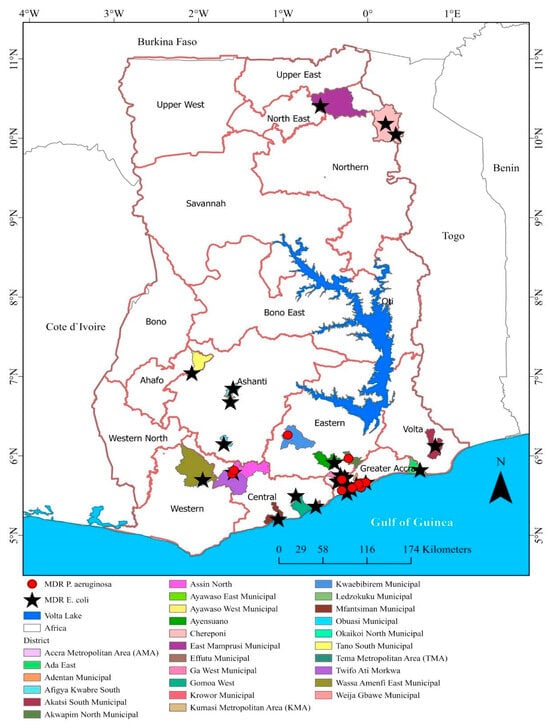
Figure 1
Open AccessArticle
Endemicity, Clinical Features, Risk Factors, and the Potential for Severe Infection in Leptospira wolffii-Associated Leptospirosis in North-Central Bangladesh
by
Sheikh Anika Tasnim, Nazia Haque, Shyamal Kumar Paul, Meiji Soe Aung, Md. Rafiul Hasan, Sheikh Nayeem Niaz, Arup Islam, Syeda Anjuman Nasreen, Mosammat Rezaun Nahar, Sultana Jahan Tuly, Parsa Irin Disha, Abdullah Al Mamun, Md. Shafiqul Islam, Santana Rani Sarkar and Nobumichi Kobayashi
Trop. Med. Infect. Dis. 2025, 10(10), 290; https://doi.org/10.3390/tropicalmed10100290 - 13 Oct 2025
Abstract
Leptospirosis is a zoonotic disease caused by pathogenic Leptospira, prevalent in tropical/sub-tropical regions. This study aimed to clarify the prevailing leptospiral species, clinical features, and risk factors of leptospirosis in north-central Bangladesh in 2024. Venous blood and urine samples were collected from
[...] Read more.
Leptospirosis is a zoonotic disease caused by pathogenic Leptospira, prevalent in tropical/sub-tropical regions. This study aimed to clarify the prevailing leptospiral species, clinical features, and risk factors of leptospirosis in north-central Bangladesh in 2024. Venous blood and urine samples were collected from 117 patients with clinically suspected leptospirosis. Among these cases, 75 (64%) tested positive for Leptospira infection by IgM ELISA test and/or PCR. By phylogenetic analysis of the 16S rRNA gene, all the samples tested were classified into L. wolffii (pathogenic group P2), showing high sequence identity to those of the type strain Khorat-H2 (97–99%) and L. wolffii reported in Bangladesh previously. Confirmed leptospirosis patients were mostly male (93%), aged 15–60 years (93%), living in rural areas in low socioeconomic conditions. Variable symptoms were presented by patients, with jaundice (84%), nausea/vomiting (84%), and myalgia (67%) being common. Some patients showed severe symptoms involving the nervous system (disorientation and neck stiffness) and the respiratory tract (cough, shortness of breath, and hemoptysis). Major risk factors for leptospirosis were exposures to mud/wet soil, sanding water, heavy rain, working in a paddy field, and cattle. In conclusion, L. wolffii was revealed to be circulating endemically in north-central Bangladesh, since its first detection in 2018, associated with variable and severe clinical symptoms in humans.
Full article
(This article belongs to the Special Issue Leptospirosis and One Health)
►▼
Show Figures

Figure 1
Open AccessArticle
Comparison of Clinical, Epidemiological, Haematological, and Biochemical Characteristics in Serologically Confirmed and Suspected Cases of Tularemia
by
Nurten Nur Aydın, Murat Aydın and Ömer Karaşahin
Trop. Med. Infect. Dis. 2025, 10(10), 289; https://doi.org/10.3390/tropicalmed10100289 - 10 Oct 2025
Abstract
Background: Tularemia is a zoonotic infection caused by Francisella tularensis, transmitted to humans through direct contact with infected animals, arthropod bites, or by ingesting contaminated water. It commonly presents with fever, lymphadenopathy, and oropharyngeal symptoms. In Turkey, where waterborne outbreaks are frequent,
[...] Read more.
Background: Tularemia is a zoonotic infection caused by Francisella tularensis, transmitted to humans through direct contact with infected animals, arthropod bites, or by ingesting contaminated water. It commonly presents with fever, lymphadenopathy, and oropharyngeal symptoms. In Turkey, where waterborne outbreaks are frequent, tularemia remains a significant public health concern. This study aimed to compare the clinical, epidemiological, and laboratory characteristics of patients diagnosed with tularemia and those with similar clinical features but seronegative results, with the goal of identifying parameters that may assist in differential diagnosis. Methods: This retrospective study included adults (≥18 years) who presented to the Infectious Diseases Outpatient Clinic between 2016 and 2024 with suspected tularemia and were tested using a microagglutination test (MAT). Patients with a positive MAT (≥1:160) or a fourfold titre increase were classified as tularemia cases, while seronegative patients were defined as tularemia-like cases. Demographic data, clinical symptoms, epidemiological risk factors, and laboratory findings were compared between the two groups. Results: A total of 105 patients were included, 54 (51.4%) of whom were diagnosed with tularemia. The duration from symptom onset to healthcare presentation was significantly longer in tularemia cases (20.3 ± 5.7 vs. 15.7 ± 6.2 days; p < 0.001). Sore throat (66.7% vs. 43.1%; p = 0.026) and tonsillitis/pharyngitis (55.6% vs. 21.6%; p = 0.001) were significantly more prevalent in the tularemia group. Epidemiological risk factors, including rural residence (92.6%), animal husbandry (74.1%), agricultural activity (72.2%), and contact with lake or stream water, were significantly more prevalent among tularemia cases (all p < 0.001). Alanine aminotransaminase (p = 0.019) and C-reactive protein levels (p = 0.027) were significantly lower in the tularemia group. Conclusions: Tularemia cases are associated with particular epidemiological risk factors and oropharyngeal symptoms. A thorough epidemiological evaluation is crucial for diagnosis, and enhancing awareness among healthcare providers and the public may facilitate earlier recognition and management.
Full article
(This article belongs to the Section Vector-Borne Diseases)
►▼
Show Figures

Figure 1

Journal Menu
► ▼ Journal Menu-
- TropicalMed Home
- Aims & Scope
- Editorial Board
- Topical Advisory Panel
- Instructions for Authors
- Special Issues
- Topics
- Sections & Collections
- Article Processing Charge
- Indexing & Archiving
- Editor’s Choice Articles
- Most Cited & Viewed
- Journal Statistics
- Journal History
- Journal Awards
- Society Collaborations
- Conferences
- Editorial Office
Journal Browser
► ▼ Journal BrowserHighly Accessed Articles
Latest Books
E-Mail Alert
News
Topics
Topic in
Infectious Disease Reports, Insects, IJERPH, Pathogens, TropicalMed, Zoonotic Diseases
Vector-Borne Disease Spatial Epidemiology, Disease Ecology, and Zoonoses
Topic Editors: Chad L. Cross, Louisa Alexandra MessengerDeadline: 31 December 2025
Topic in
IJERPH, TropicalMed, Microorganisms, Infectious Disease Reports, Pathogens
Genetic, Environmental, and Climatic Drivers of Emerging Arboviruses and Public Health Implications
Topic Editors: André Ricardo Ribas Freitas, Pedro María Alarcón-Elbal, Luciano Pamplona de Góes CavalcantiDeadline: 20 January 2027
Topic in
Diseases, Epidemiologia, Infectious Disease Reports, Medicina, TropicalMed
Surveillance Systems and Predictive Analytics for Epidemics
Topic Editors: Georgia Kourlaba, Elisavet StavropoulouDeadline: 31 January 2027

Conferences
Special Issues
Special Issue in
TropicalMed
One Health Approach to Mosquito-Borne Diseases: Epidemiology, Prevention and Treatment Strategies
Guest Editors: Kelvinson Fernandes Viana, Alex Sander R. CangussuDeadline: 31 October 2025
Special Issue in
TropicalMed
Tackling Emerging Zoonotic Diseases with a One Health Approach
Guest Editors: Laura Bellinati, Elisa Mazzotta, Greta FoianiDeadline: 31 October 2025
Special Issue in
TropicalMed
One-Health Perspectives and Solutions in Antimicrobial Resistance and Infectious Disease
Guest Editor: Windell L. RiveraDeadline: 31 October 2025
Special Issue in
TropicalMed
Advances in West Nile Virus Infection
Guest Editors: José María García-Carrasco, Adriana Flores SuárezDeadline: 20 November 2025
Topical Collections
Topical Collection in
TropicalMed
Infection Prevention and Control: Practical and Educational Advances
Collection Editors: Constantinos Tsioutis, Spyridon Karageorgos, Carlos Palos




